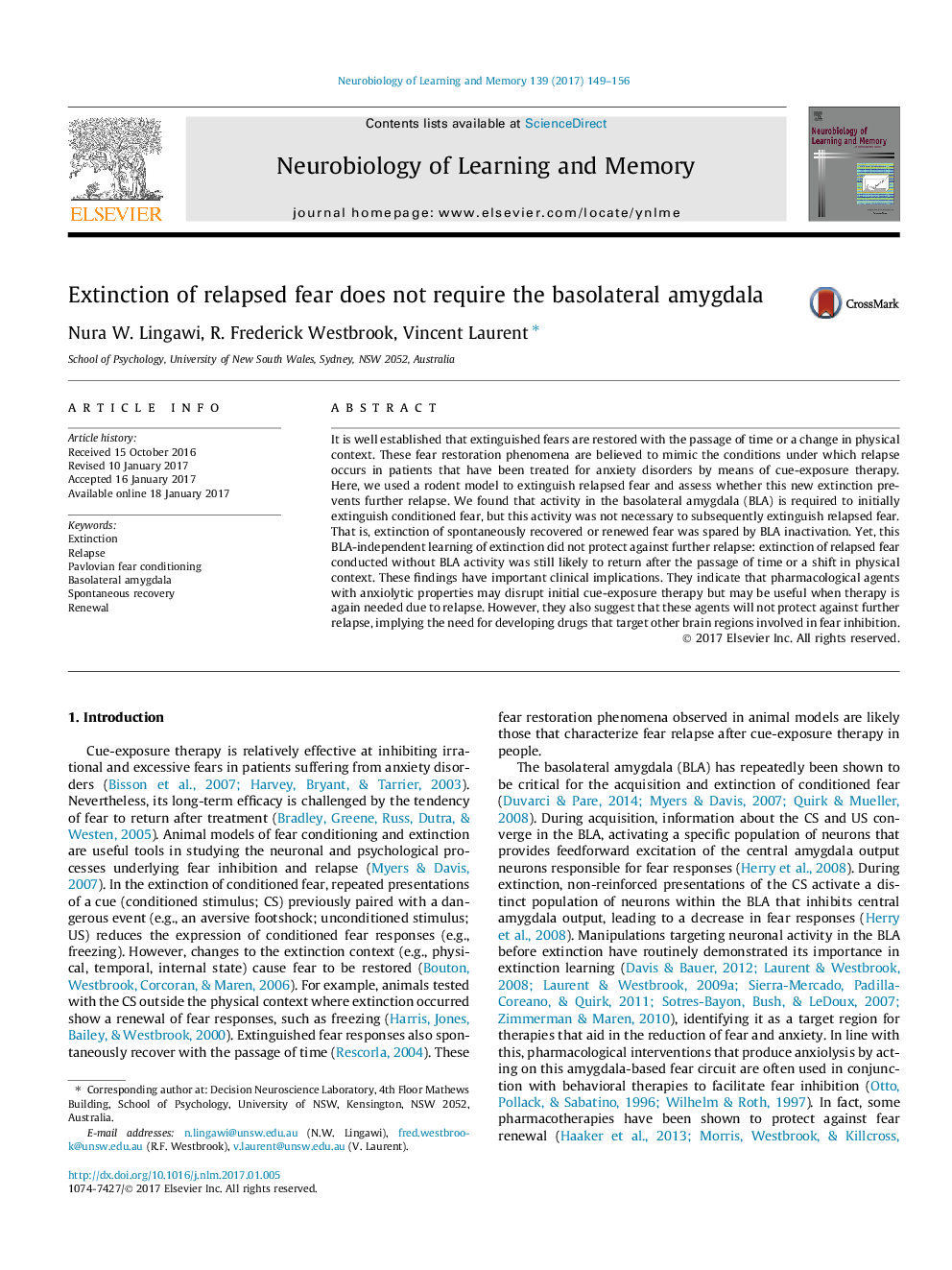| Article ID | Journal | Published Year | Pages | File Type |
|---|---|---|---|---|
| 5043301 | Neurobiology of Learning and Memory | 2017 | 8 Pages |
â¢Extinction of conditioned fear requires the basolateral amygdala (BLA).â¢Extinction of renewed or spontaneously recovered fear does not require the BLA.â¢BLA-independent extinction remains sensitive to renewal or spontaneously recovery.
It is well established that extinguished fears are restored with the passage of time or a change in physical context. These fear restoration phenomena are believed to mimic the conditions under which relapse occurs in patients that have been treated for anxiety disorders by means of cue-exposure therapy. Here, we used a rodent model to extinguish relapsed fear and assess whether this new extinction prevents further relapse. We found that activity in the basolateral amygdala (BLA) is required to initially extinguish conditioned fear, but this activity was not necessary to subsequently extinguish relapsed fear. That is, extinction of spontaneously recovered or renewed fear was spared by BLA inactivation. Yet, this BLA-independent learning of extinction did not protect against further relapse: extinction of relapsed fear conducted without BLA activity was still likely to return after the passage of time or a shift in physical context. These findings have important clinical implications. They indicate that pharmacological agents with anxiolytic properties may disrupt initial cue-exposure therapy but may be useful when therapy is again needed due to relapse. However, they also suggest that these agents will not protect against further relapse, implying the need for developing drugs that target other brain regions involved in fear inhibition.
